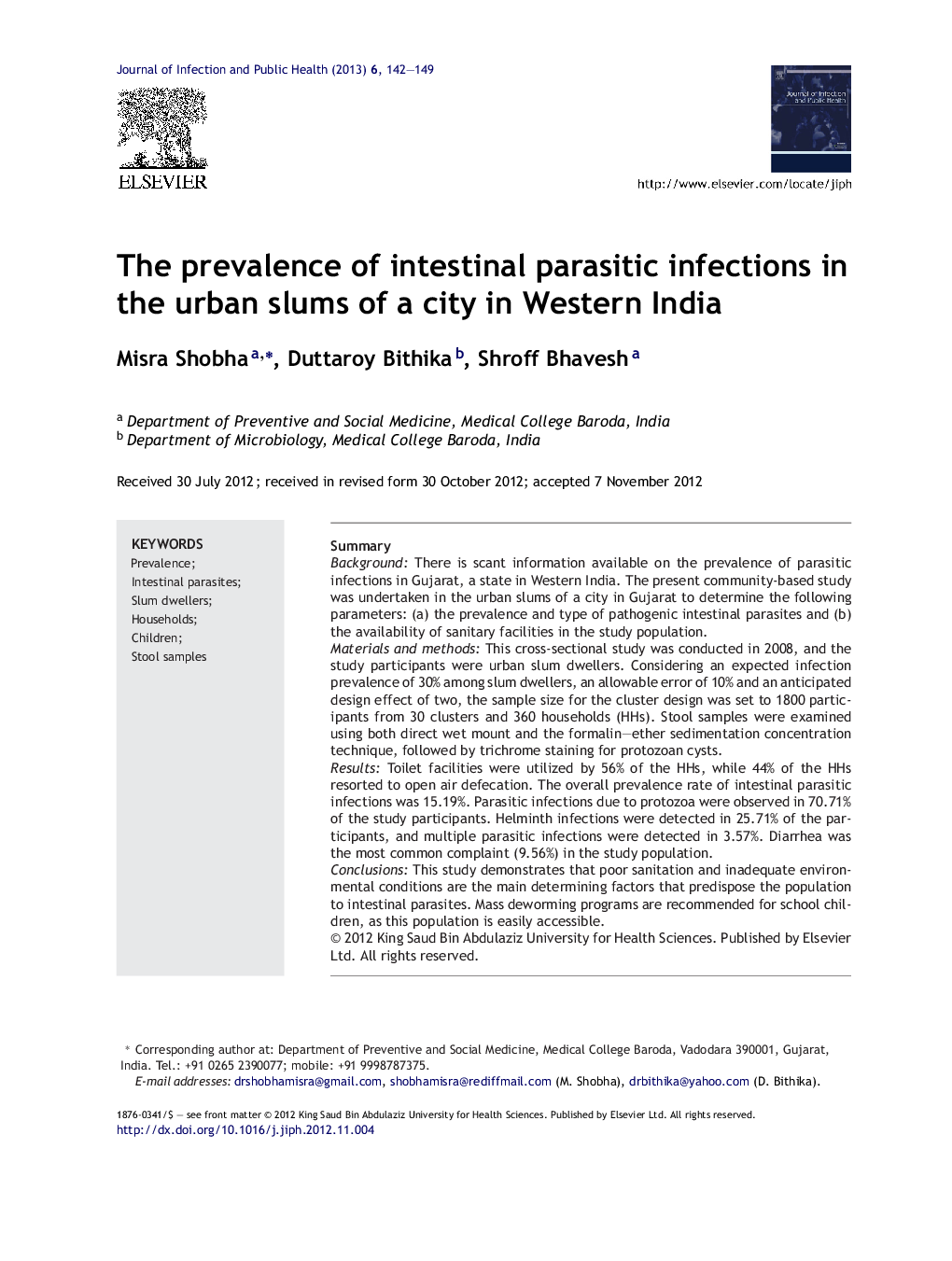| Article ID | Journal | Published Year | Pages | File Type |
|---|---|---|---|---|
| 3405889 | Journal of Infection and Public Health | 2013 | 8 Pages |
SummaryBackgroundThere is scant information available on the prevalence of parasitic infections in Gujarat, a state in Western India. The present community-based study was undertaken in the urban slums of a city in Gujarat to determine the following parameters: (a) the prevalence and type of pathogenic intestinal parasites and (b) the availability of sanitary facilities in the study population.Materials and methodsThis cross-sectional study was conducted in 2008, and the study participants were urban slum dwellers. Considering an expected infection prevalence of 30% among slum dwellers, an allowable error of 10% and an anticipated design effect of two, the sample size for the cluster design was set to 1800 participants from 30 clusters and 360 households (HHs). Stool samples were examined using both direct wet mount and the formalin–ether sedimentation concentration technique, followed by trichrome staining for protozoan cysts.ResultsToilet facilities were utilized by 56% of the HHs, while 44% of the HHs resorted to open air defecation. The overall prevalence rate of intestinal parasitic infections was 15.19%. Parasitic infections due to protozoa were observed in 70.71% of the study participants. Helminth infections were detected in 25.71% of the participants, and multiple parasitic infections were detected in 3.57%. Diarrhea was the most common complaint (9.56%) in the study population.ConclusionsThis study demonstrates that poor sanitation and inadequate environmental conditions are the main determining factors that predispose the population to intestinal parasites. Mass deworming programs are recommended for school children, as this population is easily accessible.
► A community based study was undertaken in the urban slums of a city in Gujarat. ► The prevalence of pathogenic parasites and sanitary facilities were determined. ► The overall prevalence rate of intestinal parasitic infections was15.19%. ► Protozoal infections were observed in 70.71% and Helminth infections were detected in 25.71% of participants. ► Poor sanitation and inadequate environmental conditions predispose the population to intestinal parasites.
